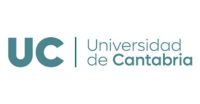Glioblastoma, is the most frequent malignant tumor of the Central Nervous System and, due to its heterogeneity and its high capacity for local invasion, in most cases it has a poor prognosis, despite current treatment protocols. One of the characteristics of the glioblastoma microenvironment is hypoxia, generated by rapid tumor growth.
The invasive capacity of Glioblastoma is the subject of one of the main lines of research of the group of “Cellular Signaling and Therapeutic Targets in Cancer” of IDIVAL, mainly the invasion associated with the molecular pathway of ODZ1, a transmembrane protein that participates in embryonic development of the central nervous system.
 Recently, within the framework of a project in collaboration with the Princess Margaret Cancer Center in Toronto (Canada), which is funded by the Carlos III Health Institute (Project PI17 / 01399 “Contribution of the hypoxia-odz1 axis to the invasive capacity of glioblastoma ”, Principal Investigator José Luis Fernández Luna and Co-Investigator Juan Martino González), the IDIVAL group has described one of the ways in which the hypoxia of the tumor microenvironment in glioblastoma regulates the invasive capacity of tumor cells. It is an epigenetic mechanism that increases the levels of ODZ1 in the tumor, making the cells more invasive. The results of this project, which have been published recently in Frontiers in Oncology, shed light on the mechanisms that regulate glioblastoma invasiveness, mediated by the tumor microenvironment. The participation of ODZ1 in this process opens the door to the development of new therapeutic strategies.
Recently, within the framework of a project in collaboration with the Princess Margaret Cancer Center in Toronto (Canada), which is funded by the Carlos III Health Institute (Project PI17 / 01399 “Contribution of the hypoxia-odz1 axis to the invasive capacity of glioblastoma ”, Principal Investigator José Luis Fernández Luna and Co-Investigator Juan Martino González), the IDIVAL group has described one of the ways in which the hypoxia of the tumor microenvironment in glioblastoma regulates the invasive capacity of tumor cells. It is an epigenetic mechanism that increases the levels of ODZ1 in the tumor, making the cells more invasive. The results of this project, which have been published recently in Frontiers in Oncology, shed light on the mechanisms that regulate glioblastoma invasiveness, mediated by the tumor microenvironment. The participation of ODZ1 in this process opens the door to the development of new therapeutic strategies.
The group of “Cellular Signaling and Therapeutic Targets in Cancer” is composed of a multidisciplinary team led by Dr. José Luis Fernández Luna and composed of researchers of basic sciences and neurosurgeons of the Neurosurgery / Surgical Spinal Unit, Unit of the Marqués University Hospital of Valdecilla (HUMV).

For the development of this project, the multidisciplinary collaboration of both IDIVAL and HUMV, as well as Dr. Gelareh Zadeh's laboratory at the Princess Margaret Cancer Center in Toronto, has been fundamental. Thanks to the IDIVAL Post-MIR contract Program Wenceslao López Albo, Dr. Carlos Velásquez, HUMV neurosurgeon and member of the IDIVAL research group, was able to complete an 18-month stay in Toronto, where he worked on the development of this project under the supervision of Dr. Zadeh and Dr. José Luis Fernández Luna and Juan Martino of HUMV-IDIVAL.
This stay, in addition to being fundamental for the development of the project, allowed Dr. Velásquez to establish close collaborative ties with Dr. Zadeh's team at the MacFeeters-Hamilton Center of Neuro-Oncology Research of the Princess Margaret Cancer Center and in the Division of Neurosurgery at the University of Toronto, at the Toronto Western Hospital. During the visit of Dr. Zadeh to Valdecilla, in March 2019, as guest speaker of the Santander Biomedical Lectures, new collaborative projects were established, both assistance, with the HUMV Neurosurgery Service, and research, mainly in the glioblastoma line.
.jpg?ver=2019-11-12-114149-087)
Ref. Velásquez C, Mansouri S, Gutiérrez O, Mamatjan Y, Mollinedo P, Karimi 2, Singh O2, Terán N, Martino J, Zadeh G, Fernández-Luna JL. Hypoxia Can Induce Migration of Glioblastoma Cells Through a Methylation-Dependent Control of ODZ1 Gene Expression. Front Oncol. 2019 Oct 10;9:1036. doi: 10.3389/fonc.2019.01036. eCollection 2019.

 Recently, within the framework of a project in collaboration with the
Recently, within the framework of a project in collaboration with the 
.jpg?ver=2019-11-12-114149-087)



















